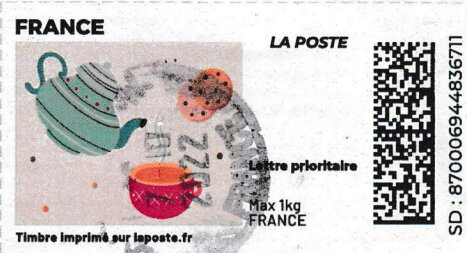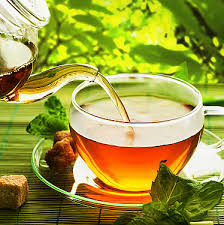Stamp: Autumn. Teatime. Redesign (France 2022)
Autumn. Teatime. Redesign (France 2022)
01 January (France ) within release MonTimbrEnLigne. Seasons goes into circulation Stamp Autumn. Teatime. Redesign face value Prioritaire No Face Value
| Stamp Autumn. Teatime. Redesign in catalogues | |
|---|---|
| Colnect codes: | Col: FR-TIM 2022-334 |
Stamp is square format.
Also in the issue MonTimbrEnLigne. Seasons:
- Stamp - Spring. Birds Nesting. Pink Background. Redesign face value Prioritaire;
- Stamp - Spring. Flowers in Wellies. Redesign face value Lettre;
- Stamp - Spring. Pink Bird and White Flowers. Redesign face value Lettre;
- Stamp - Spring. Pink Tulips. Redesign. Courrier Suivi = Recorded... face value Prioritaire;
- Stamp - Spring. Bicycle with a basket of flowers. Redesign face value Lettre;
- Stamp - Spring. Flowers in Wellies. in black. Redesign face value Ecopli;
- Stamp - Spring. Pink Bird and White Flowers. Redesign Courrier Suivi face value Lettre;
- Stamp - Summer. Luggage. Redesign face value Lettre;
- Stamp - Summer. Sand Castle. Redesign face value Lettre;
- Stamp - Winter. Skates. Redesign face value Prioritaire;
- Stamp - Spring. Birds Nesting. White Background. Redesign face value Lettre;
- Stamp - Summer. Beach Umbrella and Beach Mat face value Lettre;
- Stamp - Summer. Flamingo Inflated Toy. Redesign face value Lettre;
- Stamp - Summer. Ice Cream. Redesign face value Ecopli;
- Stamp - Summer. Ice Cream. Redesign in black face value Lettre;
- Stamp - Summer. Sand Castle. Redesign in black face value Lettre;
- Stamp - Summer. Luggage in black. Redesign face value Lettre;
- Stamp - Autumn. Hedgehog and Acorns. Redesign face value Lettre;
- Stamp - Autumn. Pumpkins and Pears. Redesign face value Lettre;
- Stamp - Autumn. Teatime. Redesign face value Prioritaire;
- Stamp - Autumn. Tree Stump and Mushrooms face value Lettre;
- Stamp - Spring. Bicycle with a basket of flowers. Redesign face value Lettre;
- Stamp - Spring. Birds Nesting. Cream Background. Redesign face value Lettre;
- Stamp - Spring. Flowers on a Bike. Redesign face value Lettre;
- Stamp - Spring. Pink and Blue Hyacinths. Redesign face value Lettre;
- Stamp - Autumn. Bonfires and Nuts. Redesign face value Prioritaire;
- Stamp - Autumn. Bonfires and Nuts. Redesign in black face value Lettre;
- Stamp - Summer. Flowers in a Basket. Redesign face value Lettre;
- Stamp - Summer. Flowers on a Typewriter. Redesign face value Lettre;
- Stamp - Winter. Sledge. Redesign. in black face value Lettre;
- Stamp - Winter Hearth/ Fire. Redesign face value Lettre;
- Stamp - Winter. Cat on the Windowsill. Redesign face value Prioritaire;
- Stamp - Summer. Flamingo Inflated Toy. Redesign face value Lettre;
- Stamp - Summer. Ice Cream. Redesign in black face value Lettre;
- Stamp - Winter. Sledge. Redesign face value Lettre;
- Stamp - Winter. Snowman. Redesign in black face value Lettre;
- Stamp - Spring. Pink Tulips. Redesign. Courrier Suivi = Recorded... face value Prioritaire;
- Stamp - Summer. Luggage. Redesign. Courrier Suivi face value Lettre;
- Stamp - Winter Hearth/ Fire. Redesign without laposte logo face value Lettre;
- Stamp - Spring. Pink Tulips. Redesign. with logo. colour variant face value Prioritaire;
- Stamp - Autumn. Pumpkins and Pears. in black Redesign no logo face value Lettre;
- Stamp - Autumn. Hedgehog and Acorns. Redesign face value Lettre;
|
Data entry completed
46%
|
|
|---|---|
| Stamp Autumn. Teatime. Redesign in digits | |
| Country: | France |
| Date: | 2022-01-01 |
| Emission: | Personalized - Official |
| Format: | Stamp |
| Face Value: | Prioritaire No Face Value |
Stamp Autumn. Teatime. Redesign it reflects the thematic directions:
utumn, also known as fall in North American English,is one of the four temperate seasons on Earth. Outside the tropics, autumn marks the transition from summer to winter, in September (Northern Hemisphere) or March (Southern Hemisphere). Autumn is the season when the duration of daylight becomes noticeably shorter and the temperature cools considerably. Day length decreases and night length increases as the season progresses until the winter solstice in December (Northern Hemisphere) and June (Southern Hemisphere). One of its main features in temperate climates is the striking change in colour for the leaves of deciduous trees as they prepare to shed.
A drink or beverage is a liquid intended for human consumption. In addition to their basic function of satisfying thirst, drinks play important roles in human culture. Common types of drinks include plain drinking water, milk, juice, smoothies and soft drinks. Traditionally warm beverages include coffee, tea, and hot chocolate. Caffeinated drinks that contain the stimulant caffeine have a long history.
Food is any substance consumed by an organism for nutritional support. Food is usually of plant, animal, or fungal origin and contains essential nutrients such as carbohydrates, fats, proteins, vitamins, or minerals. The substance is ingested by an organism and assimilated by the organism's cells to provide energy, maintain life, or stimulate growth. Different species of animals have different feeding behaviours that satisfy the needs of their metabolisms and have evolved to fill a specific ecological niche within specific geographical contexts.
Tea is an aromatic beverage prepared by pouring hot or boiling water over cured or fresh leaves of Camellia sinensis, an evergreen shrub native to East Asia which probably originated in the borderlands of southwestern China and northern Myanmar. Tea is also made, but rarely, from the leaves of Camellia taliensis. After plain water, tea is the most widely consumed drink in the world. There are many different types of tea; some have a cooling, slightly bitter, and astringent flavour, while others have profiles that include sweet, nutty, floral, or grassy notes. Tea has a stimulating effect in humans, primarily due to its caffeine content




